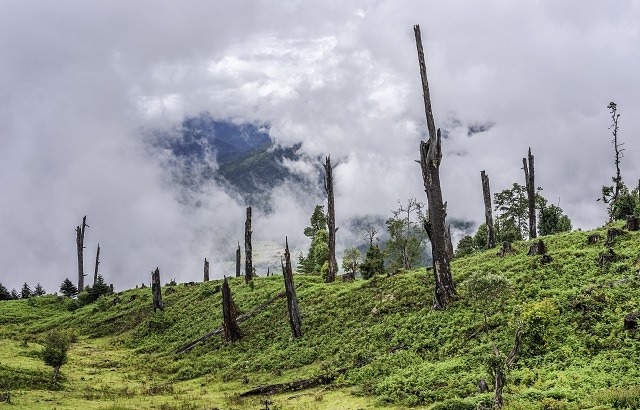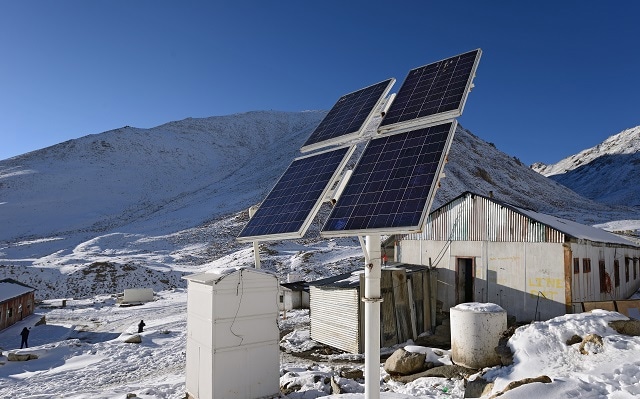
With a population of 1.35 billion, India is the second most populous country in the world. Improving economic conditions is a primary reason for such a large population and the standard of living within India has increased as well in recent decades. For example, the average life expectancy increased from 42.4 to 68.3 years between 1960 and 2015.
Many Indians have been settling in the country’s ever-expanding cities as the most economic opportunities can be found there. According to the McKinsey Global Institute, India will have more than 68 cities with populations of greater than one million people by 2030, and over 40 percent of Indians will live in cities of greater than one million people by 2025.
In addition to its growing urban environs, India also has a wide range of natural ecosystems. The world’s tallest mountain range, the Himalayas, stretches across India’s northern border. The country’s driest ecosystem, The Great Indian Desert, is in the western part of the country, while eastern India sees some of the highest annual rainfall totals in the world during the monsoon season from June to October.
Environmental Issues of India
While India has gone through a rapid period of economic growth in recent years, critics say that growth has come at a severe cost to the country’s environment in the form of deforestation, pollution and threats to endangered species.
A high standard of living in India has increased the demand for lumber and this has led to significant deforestation within the country. According to the World Wildlife Fund, overall industrial roundwood usage in India is currently the 8th highest in the world and could surpass 70 million square meters annually by 2020. Domestic supply would fall short of this number by approximately 14 million square meters.

Tree stumps are left here due to disease and illegal logging (deforestation) high in the mountains of western Arunachal Pradesh, north east India. Image Credits: Daniel J. Rao/shutterstock.com
As the nation must count heavily on imports to meet this growing need, there is anxiety that this could cause loss of forests with high conservation values and significantly lower biodiversity. The problem is only made worse by the fact that some of the world’s most iconic and endangered species live in India.
India is also known for having some of the world’s worst pollution. A 2013 report from India’s Central Pollution Control Board found that more than 2,700 million liters per day of domestic sewage is discharged by cities located along the Ganges River.
“Cities have grown without planning and investment, so most do not have underground drainage networks,” the report said. “Waste is generated but not conveyed to treatment plants. There is no power to run treatment plants; bankrupt municipalities and water utilities have no money to pay for operations.”
Environmental Policies of India
India’s current environmental policy is dominated by the country’s landmark National Environment Policy 2006. The policy starts by acknowledging environmental degradation in India is being driven by population growth, poor resource usage choices, and poverty. The guidelines then go on to state that environmental protections need to be integrated into development processes.
Arun Krishnamurthy and His Ideas on How to Clean up India's Environment. Video Credits: AsiaRisingTV/YouTube
The policy also stated that a lack of full scientific certainty is not a valid reason for postponing measures to stop degradation. Finally, the policy said any polluter should generally bear the cost of pollution. The 2006 policy also outlined plans for protecting environmentally sensitive zones, water conservation measures, wildlife protection and protection of wetlands.
Clean Technology in India
Despite its reputation for environmental problems, India is starting to invest in clean technology on a massive scale.
India’s Ministry of New & Renewable Energy recently reported that the country has an operational solar power capacity of 12.2 GW – a 370% increase over the 3 years. India’s solar energy capacity has largely been fueled by the country’s National Solar Mission and the endeavour, and now has the world’s largest renewable energy expansion program in place with the aim of generating 175 GW by 2022.

Solar panels on top of a snowy mountain in Ladakh, India. Image Credits: think4photop/shutterstock.com
Many investors and venture capitalists are now seeing India as the ‘next big thing’ for clean technology investments. In 2017, The National predicted clean energy investments in India will surpass $1 trillion dollars by 2030, with $250 billion being invested for the next five years alone. Observers credited energy reforms from the government elected in May 2014 as the reason for the boom in clean energy investment.
A Clean Future?
According to a 2014 report from the World Bank, ecosystem degradation in India currently costs the country $80 billion annually, or 5.7 percent of GDP. If the country wants to break the cycle of environmental loss and resource depletion, it must further embrace clean technology and sustainable policies, the World Bank said.
The good news, the report said, is sustainable policies and technology is affordable, with policy interventions potentially yielding benefits with minimal costs for India. A low-emission, resource-efficient strategy would be particularly helpful. For example, reducing particulate emission by 30 percent would cost $97 billion and reduce growth by 0.03 percent, yet save $105 billion in healthcare costs.
Sources and Further Reading
This article was updated on the 16th May, 2018.
Disclaimer: The views expressed here are those of the author expressed in their private capacity and do not necessarily represent the views of AZoM.com Limited T/A AZoNetwork the owner and operator of this website. This disclaimer forms part of the Terms and conditions of use of this website.